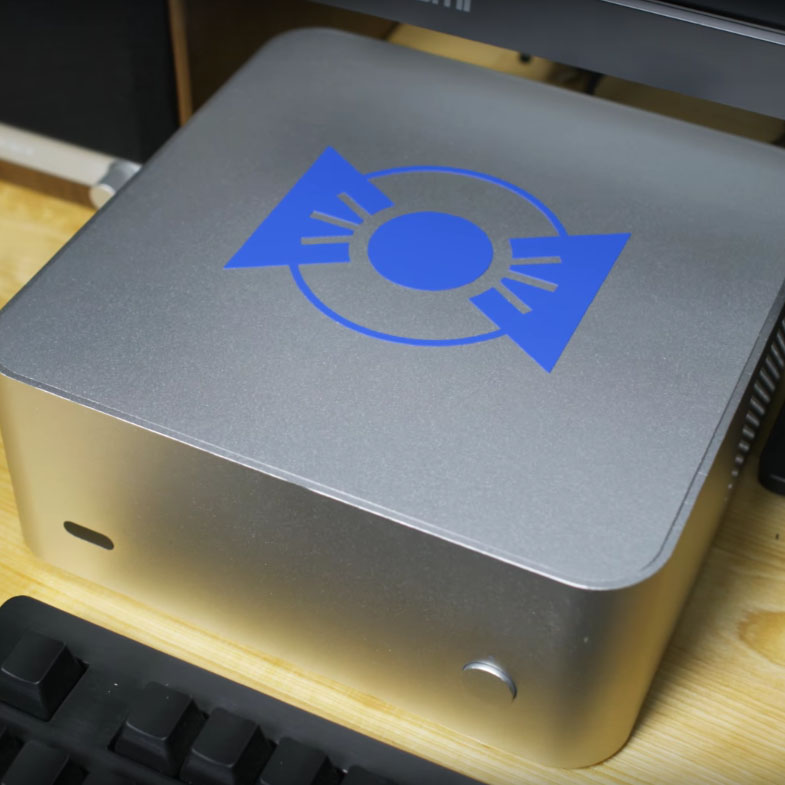- Hackintosh From Scratch Remover
- Hackintosh From Scratch Disk
- Hackintosh From Scratch Disks
- Hackintosh Install From Scratch
This hackintosh tutorial provides a brief overview of the requirements and steps that need to be fulfilled in order to turn a custom PC into a working hackintosh. Here’s what you’ll need…
Intel NUC8 or Build from scratch? I've wanted to build a hackintosh for a while, and snazzylabs recent video opened my eyes to the intel NUC. I think using the NUC as a base could have great benefit- as a first timer having off the shelf hardware could help support, and it's pretty cost effective. This is the only Hackintosh project developed from scratch to target a specific non-Apple board. We spent hundreds of hours reverse engineering Apple bootloaders, drivers, and NUC BIOS. We designed custom patches and drivers to bring macOS support to NUC Hades Canyon. As such, the level of compatibility is unprecedented. Signal for Mac; Signal for Linux - Debian-based distros. Component file in the /Library/QuickTime folder and then reboot. 0 and is fully compatible with OS X El Capitan (10.
Now that Snow Leopard's out, we're revisiting the Hackintosh, building a Hack Pro from scratch for roughly $900. Build a Hackintosh Mac for Under $800 Update: This post is no longer maintained.
Requirements:
1. 8GB+ Flash Drive
A USB Flash Drive is needed to hold the install files for macOS. The flash drive must also be 8gb or larger. This is necessary so that it can fit the operating system that you want to install storage capactivity
2. A Computer Running macOS
The macOS installer can only while running macOS. Not everyone has access to a mac or hackintosh to use or borrow. For those people they’ll need to create a virtual machine running macOS on a Windows/Linux PC. You can learn how to do that here
3. OSX .dmg installer
To create the installer on the USB drive you’ll need the .dmg install file of the version of macOS. If you plan to use El Capitan instead of Sierra we recommend using the latest version El Capitan 10.11.6 as it is the most compatible with the latest hardware available for a hackintosh.
You can download a copy of either EL Capitan or Sierra from the app store or from one of the various links over at the Download Locations
4. Hackintosh Bootloader
The Bootloader is what allows macOS to boot on a custom PC. The guides on this website are based on the Clover EFI Bootloader method, that is the most reliable way to make a hackintosh.


5. Compatible Parts

First time Hackintosher’s may want to follow one of the build guilds for maximum part compatibility. If the parts you get are not compatible you wont be able to run macOS. Also some parts don’t mix well together such as the ram and motherboard which can lead to Kernel Panics or your machine crashing.
- CPU – You’ll need an Intel Quad Core/Thread CPU if you want a hackintosh that works with minimal issues. Intel processors work natively on macOS, on the other hand AMD processors are very difficult to get working and currently not compatible at all with Ryzen, but if you have old AMD CPU try http://amd-osx.com/
- Motherboard – Gigabyte and Asus are the goto for hackintoshers because they are the most stable at running macOS so we recommend purchasing one of those. The motherboard also has to be compatible with your cpu this website has guides mostly on the LGA 1151 chipset which is the Skylake and Kabylake platform CPU’s.
- RAM – Purchasing RAM that is perfectly compatible is your motherboard is necessary on a hackintosh because not doing so can lead to memory corruption, resulting in kernel panics or system crashes. Check your motherboard manufacturers website for a list of RAM that has passed the ram compatibility test.
- Disk – Almost all SSD’s and HDD’s work on a hackintosh. NVME storage requires extra steps to get working.
- Power Supply – What power supply you go with isn’t really important, but if you go with a cheap one you go with the heightened risk of it failing or shorting out your motherboard and drives so we recommend going with a $40+ one.
- Case – Go with any computer case you’d like.
If you want minimal issues for your hackintosh visit the Build Guides
Hackintosh Installation:
STEP 1: Creating an EFI Bootloader
After you have access to a computer/virtual machine running macOS as well as having downloaded a copy of macOS you need to create the installer which you’ll need that 8GB+ flash drive for. You can learn how to create a bootable installer by following the Bootloader EFI Tutorial
STEP 2: Installing macOS
After you create the bootloader installer use it to install macOS onto your Hackintosh PC. The Installer Tutorial covers how to do just that.
STEP 3: Fully Working Hackintosh
After macOS is running on your hackintosh there may be things that aren’t working. Graphics acceleration, audio, ethernet and wifi may require additional steps to get working.If you followed one of our “Build Guides” everything should be working. If you didn’t check out the Guides on how to get various things working.
Hackintosh From Scratch Remover
So as I mentioned in my previous post, I’m going to be following a guide for the vast majority of the building process since I’ve never built my own machine before. As such, I feel its a wise idea for me to follow that guide to the letter whenever possible. The guide in question, for the curious, can be found here. If you scroll down a bit, there is also a public wishlist on Newegg.com for the appropriate parts. However, after looking at this list a bit, I decided there were some areas that I wanted to do things slightly different.
Hackintosh From Scratch Disk
First off, the case. The case model he suggests has a 500W power supply. I decided on one with a 550W power supply, as well as a little more going on visually. Small differences, but I wanted the extra power and I liked the idea of a more ‘custom design’ machine. The exact case can be found here .
The only other major change is the graphics card. The link I included above for the public wishlist does not actually have a graphics card listed. The writer of the guide uses a GeForce 7300GT card, as it was the default option for the Mac Pro at the time of his writing. Thus, my first instinct was to go with either the same card, or perhaps if the price was right, something a bit flashier. I initially found a GeForce 8600GT with 512 MB as a 128 bit card, and had planned on using that. After a bit more research however, I found that the current default graphics card used in the iMac and Mac Pro models, the ATI Radeon HD 2600XT, was also available for a similar price. Admittedly, the graphics card compatibility shouldn’t be the highest priority on my list, but I decided in the end to go with the Radeon card, for now. If someone can show me why I should go back to the GeForce, I’ll consider it.
Its not at all a ‘major’ change, but I should also note that I’m not going to be buying a DVD-Burner from Newegg. I briefly flirted with the idea of including a Blu-ray writer (especially since it was only a $200 drive) but in the end, I decided that since this machine was more for practice than for building a total monster, it was an unnecessary cost. I have a dual-layer DVD burner in my macbook and I have a fairly unused DVD Burner from an older Dell system that I’m going to put in the Hackint0sh tower, so between those 2, I imagine I’ll be alright.
Hackintosh From Scratch Disks
All together, the system as currently configured is going to cost about $760, plus taxes and shipping. However, this does not include a display, keyboard or mouse. I’m looking at picking up an Apple Wired Keyboard and Mighty Mouse ($100 total), but I’m going to hold off on the display for right now. The graphics card comes with ports for 2 DVI inputs, and converters for VGA and HDMI. My current plan is to make sure the system runs on a VGA display that I have, and then from there, I’ll be looking at something probably in the 24″ range, which will then double as a High-Def display for my PS3. And no, I’m not looking to pick up an Apple Cinema Display. Very nice looking, but I don’t feel compelled to pay the Apple Tax on a monitor.
Hackintosh Install From Scratch
Thats all for now. I expect to have a final decision on that graphics chip in a few days. If anyone has a recommendation for a cheap (in cost, not quality thank you)
